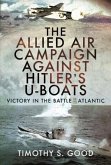Fierce Pacific ground, sea, and aerial combat raged between the Allies and Imperial Japan to halt the latter's inexorable advance in 1942-1943. After the American victory at Guadalcanal in February 1943, Admiral Halsey's South Pacific Area (SPA) naval and amphibious forces battled through the Solomon Islands building new and acquiring extant Japanese airfields. Simultaneously General Douglas MacArthur's Southwest Pacific Area (SWPA) Australian-American ground forces, supported by General George Kenney's US Fifth Air Force and other Allied air squadrons, captured Japanese installations in Papua New Guinea before campaigning along Northeast New Guinea's northern coast ousting or bypassing enemy installations there. Using newly-built Papuan airfields, the Allies gained air superiority over New Guinea and also interdicted Japanese maritime supply lines. Yet, the main Japanese southwest Pacific bastion at Rabaul on the northeastern tip of New Britain, the largest island of the Bismarck Archipelago, remained.In March 1943, realizing an amphibious assault and ground campaign against Rabaul's naval and army bases would be too costly, the US Joint Chiefs of Staff decided to neutralise Rabaul with a joint SPA and SWPA aerial siege rather than capture it. This IOW volume recounts this strategy during 1943 and 1944 and the December 1943 amphibious landings by the US 1st Marine Division and US Sixth Army units at Cape Gloucester and Arawe, respectively, which successfully isolated the Japanese fortress and satellite bases.
Hinweis: Dieser Artikel kann nur an eine deutsche Lieferadresse ausgeliefert werden.
Hinweis: Dieser Artikel kann nur an eine deutsche Lieferadresse ausgeliefert werden.








